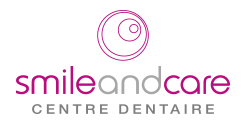Interview
“You only do well what you can see well”.
Thomas Péchier, associate dentist
Thomas Peschier, you are an Associate Dentist at Smile and Care. When did you join Smile and Care Grand-Saconnex ?
I’ve been working in the Nations district for almost twenty years. Seven years ago, my current associate, Isabelle Bek, was looking to revitalise the Sonnex dentistry centre. Back then, I was head of a dental clinic in the Nations district, and it was time for me to take on a new challenge. At Sonnex, we were a small, seven-person team and had successfully grown the clinic over seven years: today, it is a seventeen-person team.
What are your specialities?
I don’t have a speciality, I am a General Practitioner; I like to do everything – except for the heavier surgeries, which my colleagues do better than I do. I’ve always had a keen interest in optics, vision, and magnification. You only do well what you can see well. This motto is fundamental in our profession – both for diagnosis and for the therapeutic aspect: not everything can be seen on an X-ray.
When I did my thesis 25 years ago, I studied microscope usefulness in the surgical phases, and it has always been a hobby of sorts to work under a microscope. I use it half of the time, whether during the consultation to clarify a diagnosis or for dialogue with the patient, using photographs projected onto a screen. The images are magnified 25 to 40 times and not only show a problem, but also show post-treatment results.
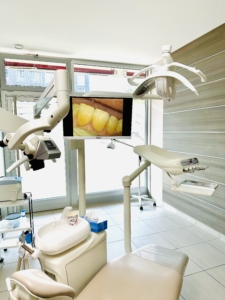
The microscope allows you to magnify, but doesn’t allow you to discover potential problems inside the tooth?
Exactly, but it does enable you to see what lies through it, since tooth enamel is a crystalline structure. It will highlight certain issues more clearly. We see our teeth all the time, but the microscope can show problems – like cracks – that aren’t visible to the naked eye.

Here, for example, we have the case of a patient who grinds their teeth a lot but isn’t aware of it. Seeing the photograph though, they realised all the weaknesses the teeth-grinding had caused. From a distance, it was impossible to detect this problem. Today, however, the patient has clearly understood the importance of wearing a mouthguard, given the extent of the cracks.
The microscope allows for a crucial dialogue with the patient –for explaining both the situation as well as the treatment plan. This visual proof helps the patient gain a solid understanding. It allows us to reveal weaknesses we wouldn’t have discovered without the help of a microscope, and to adapt the treatment plan accordingly.

Example of a crack located under an old filling which was causing the patient pain. A cleaning and composite were performed.
Why did you choose this Leica microscope?
I wanted our dental clinic to have a highly advanced microscope that was 100% functional. Wall-mounted to avoid any instability, its aperture offers me very good lighting, allowing me to see the smallest of details.
This microscope represents a real investment for the clinic – one that isn’t charged to the client. For Smile and Care, the priority is having visual comfort, precision, performance, and quality. This tool enables our practitioners to solve problems and adopt changes in practice.
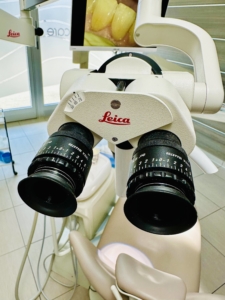
What types of dental treatment is it used for?
It can be used in all dental disciplines, more specifically for dental surgery – notably endodontics – since the naked eye simply can’t magnify up to 40x. In fact, with this tool, we can see in depth, all the way to the bottom of a canal. I use it a lot in cavity treatment, primarily for the upper teeth, from cleaning the caries to fitting the composite. We use the microscope in prosthetics work, and it is also frequently used in root canal treatments, for example.
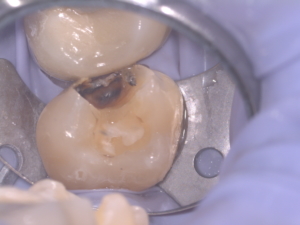

Examples of cavities seen through the microscope.
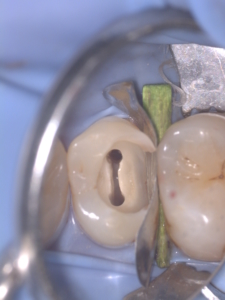
Root canal treatment seen under the microscope
How long have you been using it?
We’ve been using it since January 2022. Since then, our work philosophy has changed radically. My work posture no longer changes. It helps practitioners avoid back problems: only our hands move, and treatment precision is increased.
In a nutshell, what was your goal with this tool?
Above all, we wanted to give ourselves the means to work with high-quality tools; this is the case for much of our equipment. The ultimate goal, though – and one we all share here – is to increase the quality of our treatments.

